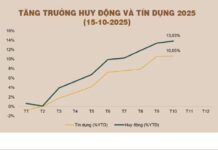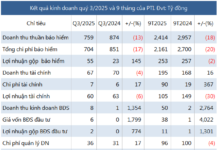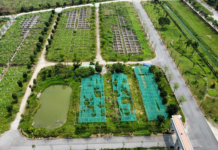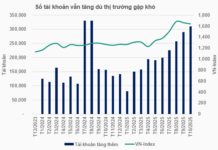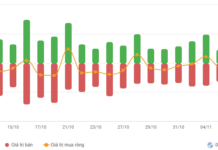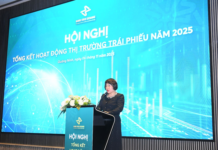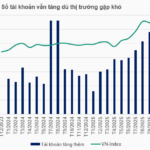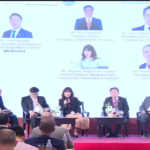Low Disbursement
The Ministry of Finance has recently submitted a report to the Prime Minister on the results of the inspection and resolution of difficulties and obstacles in promoting public investment disbursement under Decision No. 235/QD-TTg.
According to Decision 235, the Minister of Finance is the Head of Working Group No. 5, responsible for monthly inspections of localities with disbursement rates below the national average, including 12 localities: Ninh Thuan, Binh Thuan, Dak Lak, Dak Nong, Gia Lai, Kon Tum, Lam Dong, Dong Nai, Binh Duong, Binh Phuoc, Tay Ninh, and Ba Ria – Vung Tau.
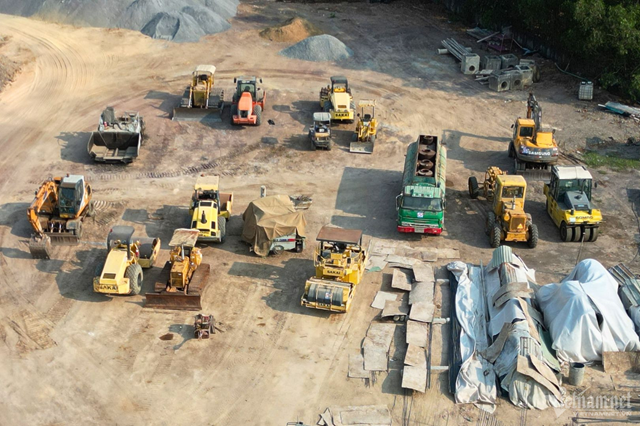
Bien Hoa – Vung Tau Expressway resettlement project costs 365 billion VND. Photo: Hoang Anh
|
Based on the disbursement results for the first three months of 2024, the Ministry of Finance stated that 6 out of 12 localities (Binh Thuan, Gia Lai, Dong Nai, Binh Duong, Binh Phuoc, and Tay Ninh) under Working Group No. 5 had public investment disbursement rates in 2024 lower than the national average.
In fact, as of March 31, 2023, the disbursement rates of the localities (Binh Thuan: 8.77%, Gia Lai 6.31%, Dong Nai 10.59%, Binh Duong 11.98%%, Binh Phuoc 10.7%, Tay Ninh 13.6%) were still generally lower than the estimated average disbursement rate nationwide.
The Ministry of Finance assessed that the estimated disbursement capacity for the first 4 months of 2024 for the 6 localities “does not show much breakthrough.” Specifically, Binh Thuan is at 12.88%, Gia Lai 11.37%, Dong Nai 18.43%, Binh Duong 16.79%, Binh Phuoc 16.36%, and Tay Ninh 18.18%.
In addition, according to the Ministry of Finance, as of March 31, 2024, many projects with planned capital allocation had yet to disburse any funds or had disbursed very little (less than 5% of the 2024 capital plan). Specifically, Binh Thuan has 5 such projects; Gia Lai has 17; Dong Nai has 5; Binh Duong has 2; Binh Phuoc has 4; and Tay Ninh has 2.
Obstacles in Mechanisms, Policies, and Implementation
In analyzing the factors contributing to the low disbursement rates in these localities, the Ministry of Finance identified multiple causes, including those related to mechanisms and policies (Dong Nai, Gia Lai, Binh Duong).
For example, in Dong Nai, Article 56 of the Law on Public Investment stipulates that the specialized public investment management agencies must prepare, appraise, and compile next year’s public investment plans and submit them to the Provincial People’s Committee from June 30 to July 20 each year. The Provincial People’s Council must hold its meetings from July 20 to July 25 each year to approve the draft public investment plan for the following year as a basis for the Provincial People’s Committee to report to the Ministry of Planning and Investment and the Ministry of Finance.
Thus, there are only 5 days between the time the Provincial People’s Committee submits the draft public investment plan for the following year and the Provincial People’s Council meeting. This timeframe is insufficient to complete the necessary procedures for preparing for the meeting.
Specifically, the Economic and Budget Committee of the Provincial People’s Council must review and submit its approval to the Standing Committee of the People’s Council while ensuring that the documents are sent to the delegates of the Provincial People’s Council 7 days before the meeting (according to the Law on the Organization of Local Governments).
In the case of Gia Lai, the determination of land prices has been problematic, affecting many projects’ land clearance due to the lack of specific land prices and land price adjustment coefficients to calculate compensation when the state acquires land. As a result, there is no basis for approving compensation and land clearance plans, which delays the handover of cleared land to construction units.
Some projects lack fill materials. In Resolution No. 106/2023/QH15 of the National Assembly on piloting special policies on road construction investment, the National Assembly allowed the pilot policy of exploiting minerals for ordinary construction materials for projects listed in the Resolution. However, some projects in localities currently facing a shortage of fill materials cannot apply the aforementioned pilot policy.
Therefore, the localities have requested the Government to assign ministries and central agencies to study and amend the Minerals Law to delegate to localities the authority to grant licenses for the exploitation of fill materials or to establish specific regulations on licensing procedures for fill materials to reduce the preparatory and implementation phases and create a separate mechanism for projects using state funds, similar to the projects that have been approved by the National Assembly for piloting.
In addition, the Ministry of Finance stated: Currently, Binh Duong is implementing several projects of regional connectivity, such as the Song Than Interchange project; the An Binh Road Upgrade and Expansion and Song Than Flyover Connection project; and the new Thu Bien Bridge project, which are being implemented in Binh Duong and Ho Chi Minh City, Dong Nai.
However, the Law on Public Investment No. 39/2019/QH14 does not specify the procedures and authorities for public investment projects implemented in areas under the jurisdiction of two or more provincial-level administrative units.
The National Assembly has issued Resolution No. 106/2023/QH15 dated November 28, 2023, piloting special policies on road construction investment, including piloting a policy allowing one Provincial People’s Committee to act as the competent authority and use the local budget to support another locality in implementing public investment activities of projects across localities for projects listed in the appendix accompanying Resolution 106/2023/QH15.
However, the aforementioned projects in Binh Duong are not included in the list attached to Resolution 106/2023/QH15 of the National Assembly. Therefore, there is no solid legal basis for investing in the construction of these projects in the two provinces from the public investment budget.
Therefore, the localities have requested the relevant ministries and agencies to promptly provide guidance on investing in projects located in areas under the jurisdiction of two provincial-level administrative units, besides the projects under Resolution No. 106.
The Ministry of Finance has requested that the Prime Minister assign specialized ministries and related units to urgently study and promptly submit to the competent authorities a plan to address the obstacles and suggestions from localities regarding the mechanisms and policies summarized by the Ministry of Finance.
|
Through its inspection of the 2024 capital plan allocation by the Ministry of Finance, the agency affirmed that another cause for the slow disbursement of public investment capital lies in the allocation of detailed capital plans for projects, which has not been in accordance with the regulations of public investment law and the Prime Minister’s Decision on capital allocation for 2024. Specifically, at the beginning of the year, some localities had not yet allocated the entire 2024 capital plan and had not allocated the funds in accordance with the principle of allocating sufficient capital for completed projects, projects in the process of final settlement, and ongoing projects, with new projects and investment preparation tasks in the medium-term public investment plan being considered for capital allocation later; the Ministry of Finance has provided feedback on public investment plan allocation to localities. The Ministry of Finance requests that the People’s Committees of the provinces implement detailed allocation in strict accordance with the regulations of the Law on State Budget and the Law on Public Investment (before December 31, 2023); carefully review, allocate capital in a concentrated manner, without spreading it too thinly, according to the correct order of priority and target, for tasks and projects that have completed investment procedures and have the capacity to disburse; focus on allocating sufficient capital for the 2024 plan for key national projects, expressways, inter-regional roads, coastal roads, and重点projects, avoiding spreading the funds too thinly; and not allocating capital to projects that do not have the capacity to disburse;… |
Luong Bang






